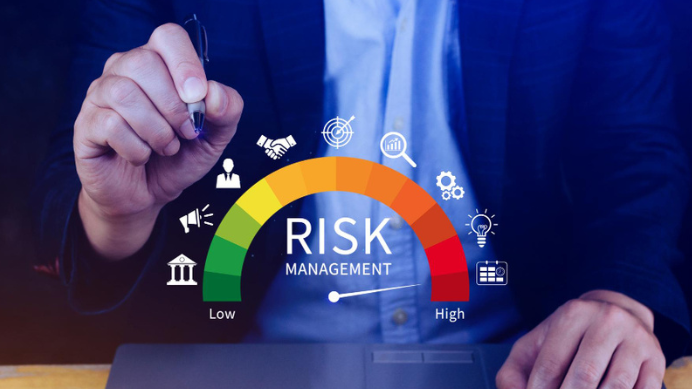
How to Build your Digital Transformation Roadmap?
Due to misaligned priorities, your digital transformation strategies may cause disruption due to inefficient execution. Without this, transformation fails to deliver an impact, becoming fragmented in the process.
With a digital transformation roadmap, you get help in creating a structured path where brands can integrate new technologies, drive long-term innovation, and optimize growth. This aligns teams with strategic goals that deliver measurable business impact.
What is a digital transformation roadmap?
A digital transformation roadmap is a structured plan that connects a digital strategy with business objectives, helping transition to efficient and data-driven operations.
A digital transformation roadmap helps execute a strategy that scales transformation efforts with measurable impact and agility.
Components of a digital transformation roadmap
With a well-structured digital transformation roadmap, business goals are aligned and executed effectively.
1. Timeline: This helps in establishing milestones and deadlines, assisting in executing digital transformation initiatives, helping drive the best digital transformation benefits.
2. Objectives: Ensure your digital investments are connected with business priorities with strategic goals, helping you deliver measurable outcomes.
3. Core principles: This provides guiding values with best practices, ensuring consistency, scalability, and long-term success.
What are the differences between a digital transformation strategy and a digital transformation roadmap?
The key differences between a digital transformation strategy and a digital transformation roadmap are:
| Aspect | Digital transformation strategy | Digital transformation roadmap |
| Purpose | Defines the vision, objectives, and competitive positioning of digital initiatives; explains why transformation is necessary. | Provides a structured execution plan breaking the strategy into phases, initiatives, and measurable outcomes. |
| Focus | Broad, guiding decision-making across the organization. | Specific, outlining projects, tools, timelines, and operational workflows. |
| Scope | High-level framework shaping long-term business goals and culture. | Detailed operational plan mapping out initiatives and their implementation steps. |
| Timeframe | Long-term (3-5+ years), shaping the company’s digital future. | Short to mid-term (6 months to 3 years), focused on execution milestones. |
| Key Components | Vision, objectives, cultural change, technology integration, customer-centric approach. | Timeline with phases and milestones, specific initiatives, resource allocation, KPIs, risk management. |
| Leadership & Involvement | Requires C-suite involvement and company-wide buy-in for cultural and strategic shifts. | Aligns teams and stakeholders, defines roles, responsibilities, and timelines for execution. |
| Measurement | Focus on long-term outcomes like operational efficiency, customer satisfaction, and revenue growth. | Tracks progress with KPIs, milestones, and performance benchmarks to ensure measurable impact. |
| Challenges | Vision, objectives, cultural change, technology integration, and customer-centric approach. | Managing cultural change, high costs, and integration with legacy systems. |
Importance of a digital transformation roadmap
A digital transformation roadmap is important because it provides a clear, structured, and dynamic plan that guides an organization through its digital transformation journey. Its key importance includes:
1. Improved planning and coordination: It centralizes planning, helping to organize transformation activities and align them with business goals, ensuring smooth execution.
2. Enhanced visibility and monitoring: The roadmap offers real-time insights into progress, resource allocation, and potential bottlenecks, enabling timely adjustments and risk mitigation.
3. Goal setting and measurement: It defines clear, measurable objectives aligned with the overall strategy, allowing organizations to track progress and adapt strategies as needed.
4. Prioritization of initiatives: Helps identify and focus on high-impact projects first, optimizing resource use and maximizing transformation benefits.
5. Facilitates collaboration and communication: By integrating digital tools and platforms, it improves teamwork across departments and locations, boosting productivity and innovation.
6. Cost efficiency and scalability: Supports cost savings through automation and optimized processes, while enabling scalable and flexible growth without major infrastructure changes.
7. Future-proofing the business: Ensures the organization can adapt to evolving technologies and market demands, maintaining competitiveness and sustainability.
8. Supports data-driven decision making: Incorporates data analysis to inform decisions, identify trends, and continuously improve transformation efforts.
What are the key focus areas for a digital transformation roadmap?
The key focus areas for a digital transformation roadmap are:
1. Customer Experience (CX) Transformation
Why it matters: Customer experience is a primary driver of digital transformation. Modern customers expect seamless, personalized, and efficient interactions across all digital and physical touchpoints.
What to focus on:
- Personalization: Use AI and big data to tailor experiences and communications.
- Omnichannel engagement: Ensure consistency across web, mobile, social, and in-person channels.
- Self-service & automation: Implement chatbots, knowledge bases, and automated support to empower customers.
- Predictive analytics: Leverage data to anticipate customer needs and proactively address issues.
Example: Start with website improvements, add chatbots in year two, and progress to hyper-personalized marketing and support by year three.
2. Data-driven decision making
Why it matters: Data is the foundation for making informed, strategic business decisions and for driving continuous improvement.
What to focus on:
- Centralized data platforms: Consolidate data into unified, cloud-based systems.
- Advanced analytics: Use AI and machine learning for predictive and prescriptive analytics.
- Product analytics: Track and optimize product or service performance.
- Data governance: Ensure data quality, security, privacy, and compliance.
Example: Implement a cloud data warehouse in year one, introduce AI analytics in year two, and expand predictive modeling in subsequent years.
3. Business Process Optimisation and Automation
Why it matters: Optimizing and automating business processes increases efficiency, reduces costs, and frees up employees for higher-value work.
What to focus on:
- Robotic Process Automation (RPA): Automate repetitive, rules-based tasks.
- ERP/CRM Integration: Connect systems for seamless data flow and process visibility.
- Process mining: Identify and eliminate inefficiencies in workflows.
- Workflow automation: Streamline approvals, compliance, and reporting.
Example: Automate back-office tasks first, integrate ERP/CRM systems next, and expand automation to complex workflows over time.
4. Culture of innovation and change enablement
Why it matters: Technology alone doesn’t drive transformation-people and culture do. A culture that embraces change, agility, and innovation is essential for sustained digital success.
What to focus on:
- Cross-functional collaboration: Break down silos and encourage teamwork.
- Agile methodologies: Adopt iterative, flexible approaches to project management.
- Training and digital literacy: Upskill employees to thrive in a digital environment.
- Leadership alignment: Secure executive sponsorship and clear communication.
- Feedback loops and innovation labs: Foster experimentation and continuous improvement.
Example: Begin with leadership and digital literacy training, introduce agile practices, and set up innovation hubs.
5. Strategic digital direction
Why it matters: All digital initiatives must align with the organization’s long-term vision, business goals, and market trends to ensure relevance and sustainability.
What to focus on:
- Digital prioritization: Identify and focus on initiatives that drive the most business value.
- Emerging technologies: Evaluate and pilot new digital transformation technologies like AI, blockchain, or IoT.
- Scaling successes: Expand successful pilots into enterprise-wide programs.
- Adaptability: Maintain flexibility to pivot as business needs and technologies evolve.
Example: Start with foundational upgrades (e.g., cloud migration), pilot advanced technologies, and integrate digital capabilities across the organization.
How to create a digital transformation roadmap?
The ways to create a digital transformation roadmap are:
- Assessment of current state: Begin by evaluating where your organization currently stands in terms of digital capabilities. This involves analyzing existing processes, technologies, and cultural readiness for change. Tools like SWOT analysis can help identify strengths, weaknesses, opportunities, and threats.
- Define clear objectives Establish specific, measurable, achievable, relevant, and time-bound (SMART) goals that align with your overall business strategy. For instance, if your goal is to improve content delivery speed, you might set a target to reduce turnaround time for articles by 30% within six months.
- Engage leadership and stakeholders: Gaining buy-in from leadership is crucial. Ensure that senior management understands the purpose of the digital transformation and how it aligns with the organization’s goals. This support can significantly increase the likelihood of successful implementation.
- Identify key initiatives: Based on your assessment and objectives, outline the key initiatives that will drive your digital transformation. This could include adopting AI tools for content generation, implementing new content management systems, or enhancing collaboration tools.
- Set timelines and milestones: Create a timeline for each initiative, breaking down the overall transformation into manageable phases. This allows for tracking progress and making necessary adjustments along the way.
- Monitor and adjust: Regularly review the progress of your digital transformation initiatives against the set KPIs. This will help you identify areas that need improvement and ensure that the roadmap remains aligned with your business goals.
Examples of a digital transformation roadmap
Some of the examples of digital transformation roadmaps are:
| Company | Transformation and Approach | Roadmap highlights and outcomes |
| Walmart | Rebuilt the entire retail experience to integrate online and in-store shopping seamlessly. Focused on inventory synchronization, personalized recommendations, and flexible delivery options. | Phased integration of online and offline inventory systems, rollout of pickup/delivery services, and data-driven personalization. Resulted in a seamless omnichannel experience and increased customer satisfaction. |
| Ford | Modernized manufacturing with advanced robotics and data analytics. Added smart vehicle technologies to collect real-time performance data for predictive maintenance. | Upgraded factories with robotics, implemented connected vehicle data systems, and integrated analytics for maintenance forecasting. Improved production efficiency and vehicle reliability. |
| AB InBev | Digitized supply chain using blockchain and IoT sensors for end-to-end tracking of ingredients and products worldwide. | Deployed connected sensors and blockchain to optimize inventory management and delivery routes, reducing waste and improving forecasting. |
| Schneider Electric | Migrated 90% of content to a cloud-based platform integrated with Microsoft Office to enable secure, flexible global workforce collaboration. | Outsourced cloud environment with granular data controls, improving operational efficiency and data security for 142,000 employees worldwide. |
| Thomas Pink | Enhanced e-commerce with a virtual fitting room to improve customer experience and gather fit preference data. | Developed online fitting platform that increased purchase rates by providing personalized sizing recommendations. |
A well-crafted digital transformation roadmap is essential for organizations aiming to navigate the complexities of digital change successfully. It serves as a strategic blueprint that aligns technology initiatives with business goals, prioritizes impactful projects, and provides a clear timeline for execution.
By focusing on key areas such as customer experience, data-driven decision-making, process automation, and fostering a culture of innovation, businesses can ensure their transformation efforts deliver measurable value and sustainable growth.
Ultimately, the roadmap not only guides organizations through the digital journey but also empowers them to stay agile, competitive, and future-ready in an ever-evolving digital landscape.






